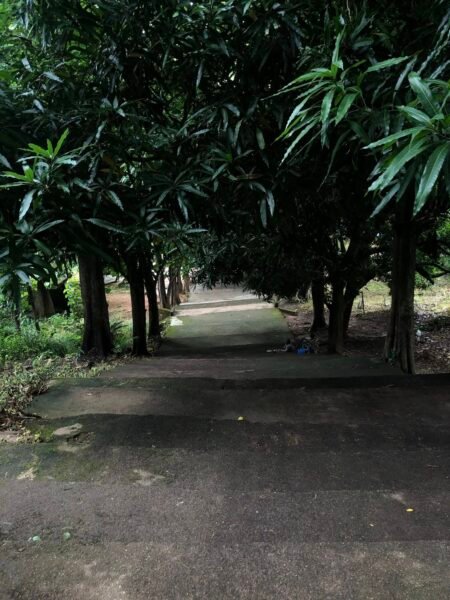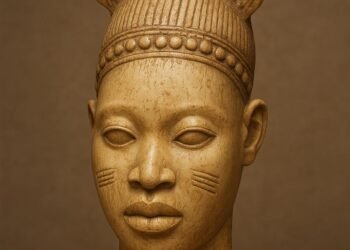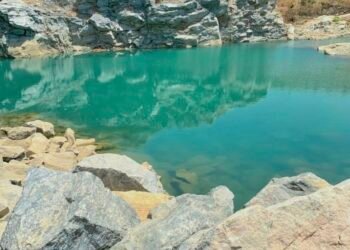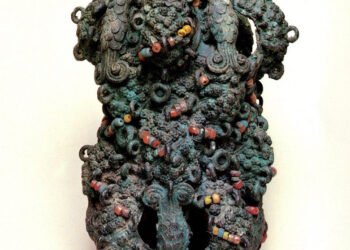Why Erin Ijesha Waterfall Should Be On Your Bucket List
Ensnared in the high forests near the Osun State in Nigeria, there lies an act of God that is not only deeply spiritual but also spectacularly breathtaking.
Erin Ijesha Waterfall, or rather the popular name among the natives, Olumirin, is far greater than the mere rock outcroppings. This is the living historian, the bedrock cultural repository, as well as the sanctuary for the permanent mystery.
This is not just a destination; it is the journey that whispers the ancient language of Yoruba culture, as it captivates the modern senses. Take us on a journey to explore its profound spirit.
Table of Contents
Legend Lost in Royalty
The Erin Ijesha Waterfall has close ties to the myths surrounding the creation of the Yoruba kingdom.
Read Also: The Dogon People: Ancient Culture and Mystical Beliefs
The waterfall, according to oral tradition, was discovered in the year 1140 AD by Akinla, a brave and mighty granddaughter of Oduduwa, the mighty patriarchal forefather of the Yoruba race.

With migrants on an epic seventeen-day voyage led by the name remembered now as the “Erin-Itadogun,” the settlement was established by the brave granddaughter after seventeen days, during which the waterfall was discovered, either directly or by hunters who unknowingly came upon its grandeur on a hunting expedition among her retinue.
Due to its formidable power, she named it “Olumirin,” or “another deity,” in testimony to the sheer sanctimony the site evoked on its original witnesses.
Deep Spiritual Significance of Olumirin
“Olumirin” was the name by which the original meaning of the waterfall came out. To the early settlers, the descending water was not simply water trickling over the stones; it was the doing of Gods, an immortal spirit by itself.
Centuries ago, the area was a pivotal location for purification ceremonies, celebrations, and sacrificial offerings that were intended to appease the spirits believed to inhabit the waters.
This spiritual environment continues to date. Many foreigners and locals are not only drawn by the natural splendor but also by the pursuit of spiritual rejuvenation and cleansing.
The gurgling waterfall and misty surroundings provide the perfect sanctuary for meditation and integration, thus fulfilling its ancient purpose as a bridging medium between the physical and spiritual worlds.
A Masterpiece of Natural Architecture
Erin Ijesha’s most notable aspect is its unusual build: seven distinct levels, each flowing into the next, creating an active climb.
The first level is easily accessible, greeting people with its expansive pool. However, going higher gets tougher, requiring climbs over old, slick rocks and careful steps on steep paths.
Read Also: The Niger River: History, Culture, and Natural Wonders
The payoff for this hard work is a changing view and the excitement of seeing something new at each level.
The Thrilling Ascent and Its Rewards
The climb through the seven levels is the core of the Erin Ijesha experience. Each plateau has its own distinct feel and view. The second level is the most exciting, with water cascading down a 40-meter cliff, which is really intense when it rains.
As you go higher, you see more of the area. The air becomes cooler and cleaner, filled with negative ions from the falling water.

The final stop on the seventh level is Abake, a village that translates to ‘village on the top.’ It’s interesting to mention that Abake borders Efon-Alaaye, which is located in Ekiti State.
Erin Ijesha Water Fall
The waterfall is situated in a vibrant ecosystem on Effon Ridge’s southwest side. It’s among rolling hills and thick evergreen forests.
Tall Iroko, Arere, and Oganwo trees form a shady area, providing a home to many birds and animals. The water is also teeming with life, featuring freshwater prawns that inhabit the pools.
These prawns are an odd thing to see in an inland freshwater area. They interest scientists and tourists, adding to the site’s exceptional ecological value.
Whispers and Mysteries in the Mist
Any place with such an old history tends to attract its fair share of mysteries and legends. Beyond its spiritual roots, one popular local belief is that the waterfall doesn’t really have a typical source.
Instead, people say it comes from a giant, magical pot that’s perched right on top of the ridge. There are also stories about mystical beings and protective spirits keeping an eye on the falls.
Some people even consider the fact that the water has flowed steadily for centuries, maintaining its volume throughout the year, a miracle.
Whether these stories are taken metaphorically or seriously, they definitely add to the wonder and connect visitors to the rich local folklore.
The Economic Lifeline of Tourism
Erin Ijesha has, over the decades, grown to become the heartbeat of the area’s economy. This is among the most visited centers by tourists in Nigeria, with over 100,000 adventure, nature, and culture enthusiasts from around the world visiting the area annually.
The influx has created immense job opportunities for the nearby residents. Residents are employed as information guides, guards, and vendors, selling souvenirs, food, and beverages.
The tourism economy has also facilitated the growth of ancillary businesses in the city, including restaurants, taxi services, and hotels, thereby creating an overall economic ecosystem that benefits the entire region.
Navigating the Path to Development
Erin Ijesha’s development, though popular, has problems. On the one hand, the same thing that draws the crowds also brings them; the crowds, in turn, create the issues of over-tourism.
The most significant concern is how to develop what’s needed, which includes better roads, safer climbing equipment, simple things like bathrooms and picnic spots, in an intelligent manner that doesn’t destroy the site.
Read Also: The Legacy of Timbuktu: Africa’s Ancient Knowledge Center
How to balance growth with maintaining things the way they are: how to make the waterfall accessible for visitors, fun without losing its spiritual or cultural significance, or damaging the site. How to balance respect for the past with thinking ahead.
Guardians of a Sacred Heritage
Olumirin conservation is not just wished for but needed. Conservation efforts are undertaken by local groups, traditional rulers, and the Osun State Tourism Board. Conservation, of late, has emphasized sustainable tourism, inviting tourists not to litter but to let places be as they are.

There is also increasing pressure to engage local people in managing and deciding about tourism.
Talking to the folks who are closest to Olumirin really boosts the chances of keeping its natural and cultural heritage intact. Their connection to the land is crucial in ensuring its preservation.
The Ever-Present Deluge of Nature and Culture
Erin Ijesha Waterfall is a profound expression of Nigeria’s heritage. It is where nature and culture present the world with an amazing, everlasting dance. It is a testament to Akinla’s journey, speaking the same tone as the cry of generations, and providing room for adventure and serenity.
The seven steps represent more than just a place; they mark moments in time and levels of meaning, encouraging exploration and reflection.
Visiting Erin Ijesha is like stepping into a history book. For almost a thousand years, the waterfalls have flowed, showing the story and soul of the Yoruba people. We have to experience, understand, and protect this treasure for future generations.








